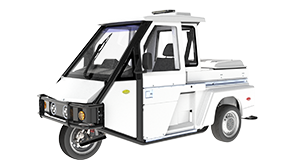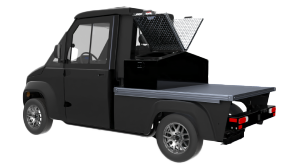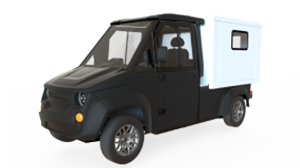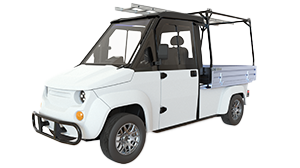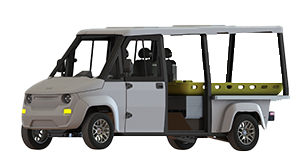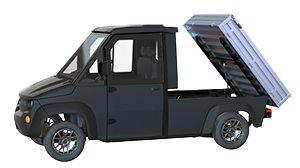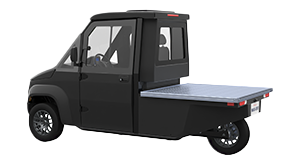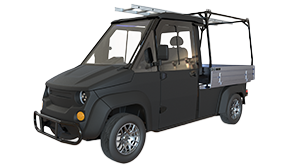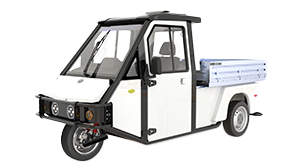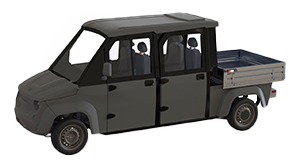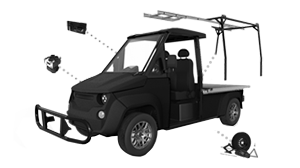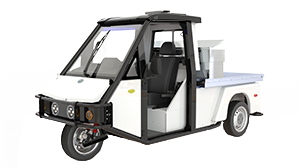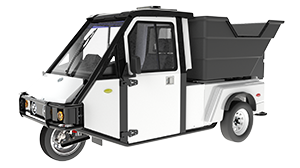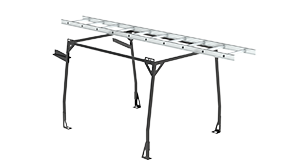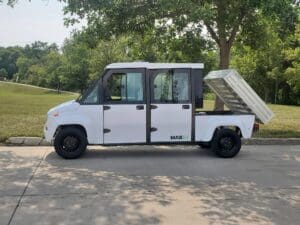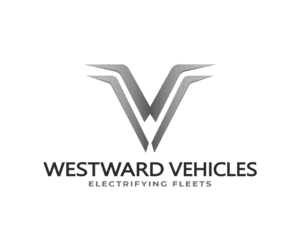When it comes to managing campuses and other large facilities, there are a number of considerations to juggle:
- The safety of maintenance staff
- The speed with which maintenance staff can reach any given point of the facility
- The cost of moving maintenance staff around
- The cost of equipment
- The convenience and ease with which equipment can be used
Low-speed utility trucks can help with all of these considerations and more. They’re a low-cost, efficient, all-in-one solution for facility and campus maintenance. Let’s delve into the advantages of low-speed utility trucks:
Benefits And Advantages
As a safe, reliable, and easy-to-use option for transportation, low-speed utility trucks are the perfect choice for maintenance teams. Anyone with a driver’s license can quickly learn to use a low-speed utility truck.
Campuses and other large facilities have traditionally turned to golf carts for transporting maintenance staff. Low-speed utility trucks are an incredible alternative because they can be outfitted with more features. Our low-speed utility trucks can be equipped with snow plows, tow hitches, ladder racks, dump beds, and more. This means you can use them for maintenance, repairs, landscaping, and more—hauling, plowing, towing, and transporting all kinds of things. This makes our trucks the ideal vehicle for your diverse university campus maintenance needs.
Electric Vehicles For Campus Maintenance
Electric low-speed vehicles (LSVs) are a particularly great choice for campus and facility maintenance. With zero tailpipe emissions, you can drastically reduce your carbon footprint—and that can help you access all kinds of government grants—all while promoting your campus as a greener place to study.
Electric motors also generate a lot less noise than traditional combustion engines. Students want to relax or study on campus, and loud noises can create an uncomfortable environment; electric LSVs can help you foster a more tranquil environment.
Thanks to their versatile and customizable nature, our electric low-speed utility trucks can be used for all kinds of tasks around campus, from maintenance to landscaping—and when you’re done with a particular task, accessories can be removed or added to change the functionality of your fleet.
Low-Speed Vehicle (LSV) Regulations And Compliance
Regulations and compliance for LSVs differ from jurisdiction to jurisdiction. When driving on private property, most jurisdictions allow you to use LSVs without a license. Most campuses and large facilities do feature public roads; most operators will need a driver’s license in most circumstances.
Low-speed vehicles are street legal in most jurisdictions, but you’re often limited in which roadways you can actually drive LSVs on. Jurisdictions frequently limit LSV operation to roads with a speed limit of 35 mph—operating LSVs on roadways with higher speed limits is usually illegal.
This is because LSVs don’t need to meet the same safety standards as traditional vehicles. That’s part of what makes them so affordable; driving at lower speeds for maintenance presents a far lower risk than driving at, say, 62 mph. All Westward vehicles come standard with a powder coated steel full rollbar unibody chassis. This means exceptional operator safety compared to other LSV’s on the market.
Utility Vehicle Customization And Configuration
Electric utility vehicles can be customized to meet your maintenance needs. As mentioned above, our utility vehicles can be equipped with plows, ladder racks, and more. You can also choose the size of your battery, and even incorporate features like heating, air conditioning, and more. The customizability of LSVs is a huge part of their appeal—you get what you want, leave what you don’t, and save money without sacrificing functionality.
Maintenance And Support
Compared to traditional high-speed combustion engine vehicles, LSVs need relatively little maintenance. You never have to worry about oil changes, fixing spark plugs, or very much else at all. There are simply fewer parts to worry about with an electric vehicle, and you’ll find the low maintenance required is a stark contrast to gas-powered vehicles.
Integration With Existing Fleets
LSVs are easy to integrate with existing fleets, and you can even match the colour and branding on your LSV to your existing fleet’s branding. Our LSVs are fully customizable, so they can fill any gaps in your fleet. We’ve heard a lot of great feedback from clients who have or are considering replacing their fleet with our LSVs—we hope you’ll have the same experience.
Choosing The Right Vehicle
There is no one-size-fits-all vehicle for every campus and facility across North America; that’s why our vehicles are so highly customizable. Here are some things to think about when selecting your LSV:
- The cost of purchase
- The savings (no gas, low price to charge, low cost of maintenance)
- How far you need them to travel on a single charge
- The features you’ll want (comfort, functionality, and more)
- The terrain they’ll travel on (Do you need four-wheel drive? Winter tires?)
- The power/torque you’ll need
- Towing/hauling capacity
- How many people need to travel in the LSV at once
These are just a few of the things to consider. To choose the perfect electric maintenance cart for your needs, contact us today!
Implementation And Training
If you’ve got a driver’s license, learning to use an LSV is fairly simple. For more information on how to use attachments like our snow plow, contact us—but don’t worry too much. Using all of the attachments is a straightforward process—we designed our LSVs to be user-friendly!
